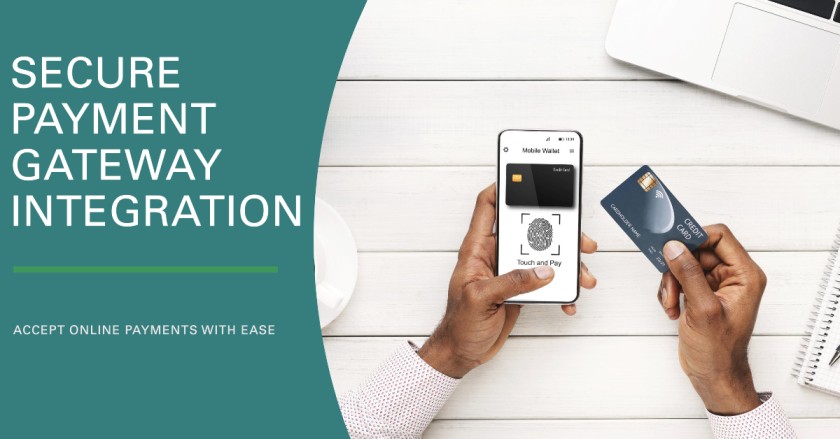Introduction
In the rapidly evolving digital landscape, where online commerce is thriving, user experience (UX) has become a decisive factor in the success of any e-commerce venture. Crucial to this experience is the seamless and secure handling of payments. This article explores the indispensable role of payment gateway integration in enhancing user experience. We also delve into the added benefits of payment aggregators in this process.
The Significance of Payment Gateway Integration
Payment gateway integration establishes a connection between an e-commerce platform and a payment gateway service, enabling secure and efficient online transactions. As an intermediary, it securely transmits payment information between customers, merchants, and financial institutions. This integration empowers businesses to accept various payment methods, including credit cards, debit cards, digital wallets, and even cryptocurrencies.
Streamlining the Checkout Process
At the heart of a seamless user experience lies the checkout process, and well-implemented payment gateway integration is pivotal in its optimization. By reducing friction and eliminating barriers, businesses can enhance the user experience, leading to increased completion rates and customer satisfaction.
In this context, payment aggregators further augment the process by offering a single, unified interface that connects with multiple payment gateways. This consolidation streamlines the checkout process by providing customers with various payment options through a singular gateway, significantly reducing the steps required to finalize a purchase.
Ensuring Security and Trust
Security remains paramount in online transactions. Payment gateway integration plays a fundamental role in safeguarding sensitive financial data through robust encryption during transmission, shielding it from unauthorized access. Compliance with the Payment Card Industry Data Security Standard (PCI DSS) further solidifies the security measures, instilling confidence in customers that their information is well protected.
Payment aggregators contribute to this aspect by offering an additional layer of security. By centralizing transactions and minimizing the storage of sensitive data on the merchant’s server, aggregators reduce the risk of data breaches, making the payment process even more secure and trustworthy.
Supporting Multiple Payment Methods
A diverse array of payment methods cater to customers’ varying preferences, and businesses must adapt to these preferences to optimize user experience. Payment gateway integration facilitates the acceptance of different payment options, accommodating credit and debit cards, digital wallets, bank transfers, and emerging cryptocurrencies.
Payment aggregators excel in this area by expanding the spectrum of supported payment methods even further. By connecting with multiple payment gateways and financial institutions, businesses can accept a broader range of regional and international payment methods, enhancing the user experience for local and global customers.
Reducing Abandoned Carts
The issue of abandoned carts remains a challenge for online retailers. Customers often abandon their purchases due to unexpected costs, complex checkout processes, or security concerns. Optimal payment gateway integration addresses these pain points, reducing the likelihood of cart abandonment.
Here, payment aggregators can provide valuable insights through data analysis. They identify potential bottlenecks and friction points by scrutinizing user behaviour during checkout. With this knowledge, businesses can fine-tune their checkout processes, improving the user experience and minimizing abandoned carts.
Personalization and Customization
Personalization is a driving force in today’s digital landscape. Payment gateway integration allows businesses to analyze transaction data, discern customer preferences, and tailor offerings accordingly. Customized payment experiences, such as preferred payment methods or personalized discounts, nurture customer loyalty and enhance the overall user experience.
Payment aggregators can contribute to personalization by analyzing payment data across multiple platforms and industries. This broader perspective enables them to offer valuable insights and best practices, empowering businesses to tailor their payment experiences in a manner that resonates with their target audience.
Mobile Wallet Integration
The rise of mobile wallets has revolutionized payment habits. Integrating popular mobile wallet options into the payment gateway license a faster and more convenient payment experience for users. Furthermore, mobile wallet integration allows businesses to leverage loyalty programs and rewards, encouraging repeat purchases and elevating the user experience.
Through their multi-gateway approach, payment aggregators facilitate mobile wallet integration by connecting businesses with various wallet providers. This streamlines the integration process and ensures compatibility with various mobile payment solutions.
Cross-Border Transactions
For businesses expanding globally, cross-border transactions are a common occurrence. Payment gateway integration simplifies cross-border payments by handling currency conversions and navigating international regulations. By offering local payment options in different regions, businesses can enhance the user experience for international customers.
Payment aggregators add value by navigating the complexities of cross-border transactions. By leveraging their network of payment gateways and expertise in international regulations, they empower businesses to offer seamless cross-border payment options, reducing friction and providing a positive user experience regardless of location.
Analyzing and Improving User Experience
Payment gateway integration necessitates continuous monitoring and improvement. Analyzing user behaviour during the payment process provides valuable insights into pain points and areas for enhancement. A/B testing different payment flows and checkout options can optimize the user experience and increase conversion rates over time.
Payment aggregators contribute to the improvement process by offering sophisticated analytical tools and dashboards. These tools consolidate data from multiple gateways, simplifying the analysis of payment trends and customer behaviour. With these insights, businesses can continually implement iterative improvements to enhance the user experience.
Conclusion
In conclusion, payment gateway integration is the bedrock of a seamless and secure user experience in online transactions. Businesses can foster customer loyalty and success by streamlining the checkout process, ensuring security and trust, supporting diverse payment methods, and enabling personalization.
The synergy between payment gateway integration and payment aggregators further fortifies these advantages. By providing a unified interface for multiple gateways, reinforcing security measures, expanding payment options, analyzing data, and facilitating cross-border transactions, payment aggregators empower businesses to elevate the user experience to new heights.
The journey towards an exceptional user experience is dynamic and ever-evolving; embracing the partnership between payment gateway integration and payment aggregators will undoubtedly yield greater customer satisfaction and business growth in the digital age.

